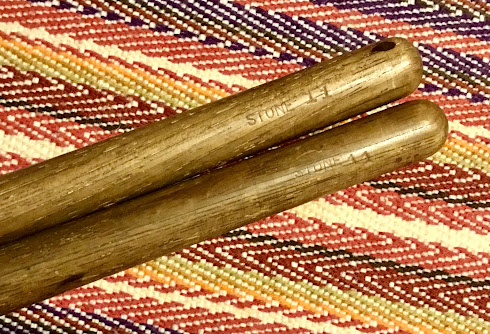Once upon a time, there was a company called Hot Sticks. Founded in Mississippi in 1979, their painted drum sticks made a splash among younger drummers through the early 1990s. Then business fell off, and the company closed for awhile in 2018. They resurfaced in 2022, and now offer painted and imprinted drum sticks, pens and baseball bats.
I remember these showing up in my high school band room around my junior year. A couple of freshman drummers had bought them at our local music store. They were purple and red and they didn’t really impress me. By then, though, I’d been introduced to much better sticks and I guess that made me something of a drum snob. To be fair, no one in my college or professional ensembles used them, so I felt somewhat vindicated.
I was never able to determine if the company ever made its own drum sticks. I suspect that they probably did not. It was too easy, even back then, to job out the drum sticks from another maker and paint and imprint them in-house.
For a few years Hot Sticks followed the new marching percussion craze and tried to make their entry into the market with the Bully sticks. They were painted white (to avoid having to tape them) and were meant to compete with Promark and other companies.
The sticks were not anything special, even for the time. CB700, Fibes and other companies also had their sticks made elsewhere and branded accordingly. But based on what I could research, the Billy sticks we only offered for a few years, and then quietly discontinued before 1990. Since most marching sticks were destroyed through use, surviving pairs are harder to find.
So I scored these on eBay. They’re in good shape, though they’re certainly not pitch-matched. (Almost no mass-produced sticks were back then.) They’re a great example of how a company used appearances to sell a sub-optimal product, and for that alone they make a nice addition to my collection of vintage marching sticks.
























